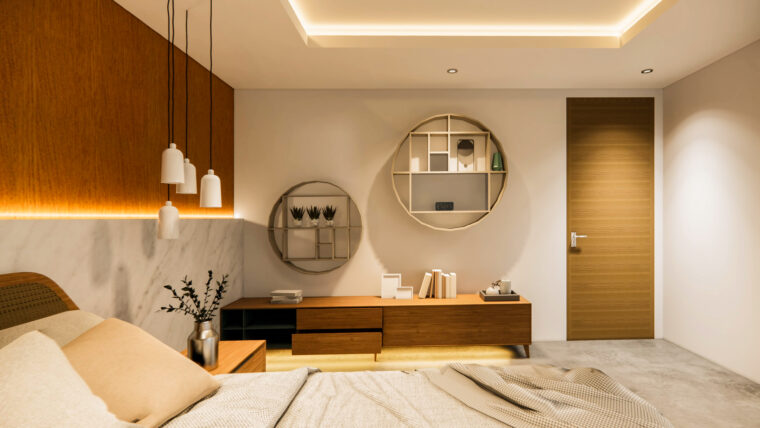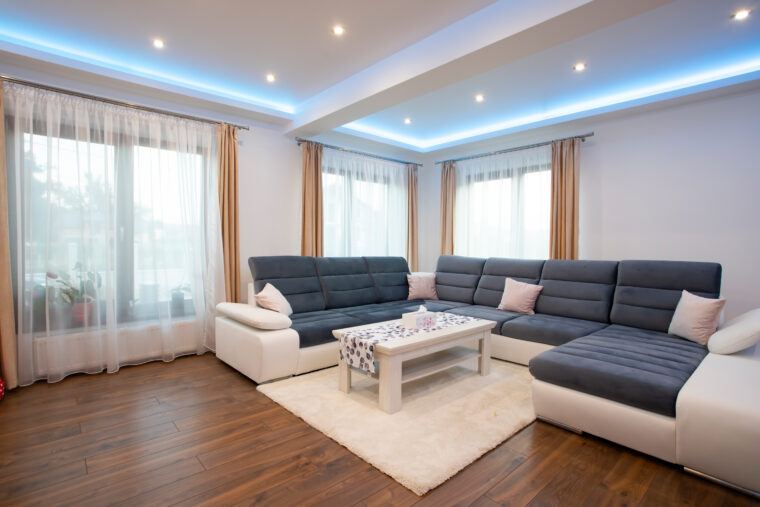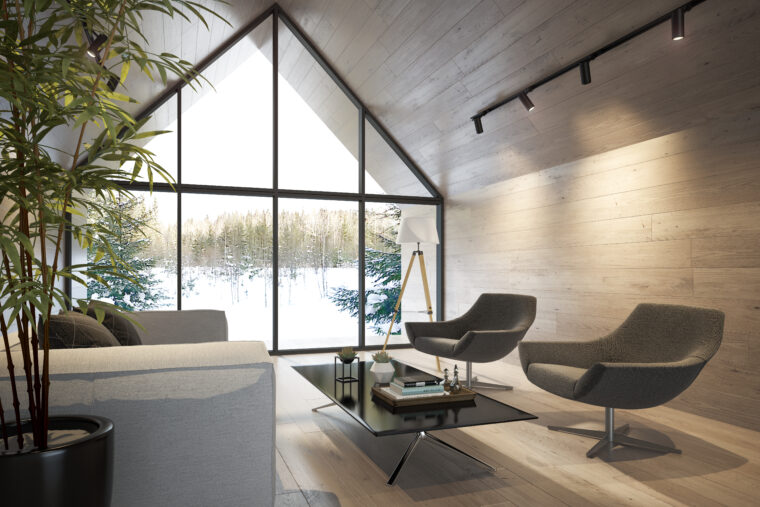Illuminate Your Home With Eco-Friendly Lighting Solutions
Are you looking to make sustainable changes in your home while saving money? Our guide on sustainable lighting solutions is the perfect resource for you! We have compiled a comprehensive list of tips and tricks to help you create an eco-friendly, cost-effective lighting plan that meets your needs. Our guide covers everything from selecting the right light bulbs to installing energy-efficient fixtures. Don’t miss this opportunity to impact the environment and your wallet positively!

3d rendering. Interior house or resort modern open living space with kitchen.Loft style Duplex apartment residence.Home decoration luxury interior design.
How to Light Your Home In a Sustainable Way?
Lighting accounts for 5-10% of a typical household’s energy budget. By making some sustainable changes to how you light your home, you can reduce your environmental impact and save money on your electricity bill. Here are some tips to help you get started:
Use LED Bulbs
Switching from old incandescent bulbs and fixtures to LED technology can be a wise long-term investment that saves energy and cuts electricity bills for businesses and homeowners. If you haven’t already, switching to LED bulbs is the first step to embracing sustainable lighting for your home. LED bulbs promote sustainability and help you save on your electric bill. On average, an LED bulb uses 75 percent less electricity and lasts 25 times longer than a regular incandescent bulb. Additionally, LED bulbs are recommended for babies for safety reasons. As babies start to take their first steps, it becomes essential for them not to trip on cables or floor lamps. It’s also important to remember that devices are available to cover plugs and prevent electrical shocks.

Modern living room interior – wide angle photo.
Keep Your Shades Open
During the day, keep your lamps off and let natural lighting into your home. In addition to reducing your energy consumption, this will also make your home feel more welcoming. You can use slatted blinds or window film to maintain privacy while allowing natural illumination into your home.
Use the Open Floor Plan
Consider an open floor plan with minimal walls to prioritize sustainability in your home design. This approach will help you illuminate larger areas of your home with fewer light sources, and it’s also a popular design trend for many modern homes. Add contemporary pendant lighting to your open space for an updated look.
Lighten Up the Walls
Dark walls can absorb natural illumination, creating a dimly lit environment that may feel unwelcoming. However, there are ways to combat this. By painting your walls a lighter color or using bright wallpaper, you can create a more inviting space that feels brighter and more open. Not only will this give the illusion of a larger room, but it will also reduce the need for excessive artificial lighting. With fewer and less powerful fixtures needed to illuminate a brightly colored space, you can save money on your electricity bill while still enjoying a well-lit, inviting home.

Use Recycled Fixtures
When shopping for new light fixtures, it’s a good idea to consider where and how they were made. Many handmade light fixtures now incorporate recycled materials such as glass. Alternatively, you can get creative and make your fixtures using materials you already have at home, such as old glass bottles, cans, and jars.
Install Dimmers
As dimming technology advances, using dimmers in your home or office can positively impact your quality of life and utility bill. Dimming your lights saves energy and extends the life of your LED bulbs, protecting your investment in quality, energy-efficient lighting. With better control over the quality of light, new dimming technology is a trend worth adopting.
Use Lamps and Task Lighting
You should use task lighting and lamps in specific areas of your home instead of large overhead fixtures to reduce energy consumption. For instance, use only the recessed lights you need for cooking instead of the overhead kitchen light, or use a reading lamp instead of the prominent overhead fixture in your living room.
Conclusion
Making sustainable changes to your home’s lighting doesn’t have to be difficult or expensive. By implementing the tips and tricks in our guide, you can reduce your environmental impact, save money on your electricity bill, and create a welcoming, well-lit home. There are many ways to achieve sustainable, cost-effective lighting, from using LED bulbs and keeping your shades open to installing dimmers and task lighting. Don’t wait – start illuminating your home in a more eco-friendly way today!
